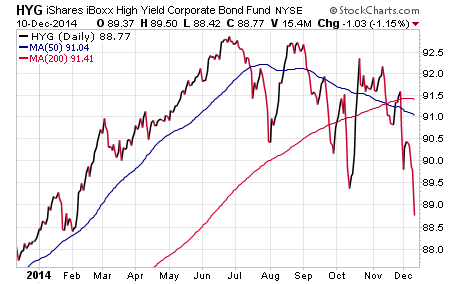3 High Yield Alternative Income ETFs FMD Capital Management
Post on: 16 Апрель, 2015 No Comment

Written by David Fabian, April 16th, 2014
Income investors that have sought out alternatives to traditional dividend paying equities and fixed-income have largely been rewarded this year. The combination of higher yields and non-correlated returns within the context of a diversified portfolio are attractive qualities for asset classes such as MLPs, REITs, and preferred stocks.
Most investors tend to flock to the oldest and largest ETFs in these respective categories. This is probably because the funds are well known and have been used successfully in the past or they represent the most diversified mix of underlying securities. They are also usually the most heavily traded, which provides excellent liquidity and execution when buying or selling.
However, in researching these areas I came across several smaller ETFs that have surpassed their more established peers in 2014 and may warrant a second look if you are considering alternative income sources .
Master Limited Partnerships
In the world of master limited partnership ETFs, the Alerian MLP ETF (AMLP) is the reigning king. This fund has nearly $8 billion invested in a relatively concentrated portfolio of 25 holdings and pays a yield of 6.21%. So far in 2014, this ETF has increased 2.4% on the back of strong support for oil and natural gas prices.
One worthy competitor to AMLP is the First Trust North American Energy Infrastructure Fund (EMLP) which is an actively managed ETF with a more diversified base of 55 energy companies in its portfolio. EMLP has jumped nearly 6% this year due in large part because it has 30% of the portfolio dedicated to traditional utility stocks. The utility sector is the leading market segment so far in 2014 and certainly EMLP has benefitted from that exposure.
The one drawback to this difference in underlying holdings is that the yield on EMLP is just 3.21% because it is not fully dedicated to the master limited partnership theme. However, EMLP only charges an expense ratio of 0.95%, which is just a fraction of the hefty 4.85% fee that AMLP charges on an annual basis.
Real Estate Investment Trusts
Another hot sector this year has been real estate investment trusts. Stabilizing interest rates and strong housing data has renewed support for this income generating asset class. The largest ETF in this space is the Vanguard REIT ETF (VNQ) which invests in a broad portfolio of 132 commercial, residential, and specialty REITs. So far this year, VNQ has increased in value nearly 12%.
While that performance is certainly excellent, one sub-sector has posted even stronger returns in 2014. The iShares Residential Real Estate Capped ETF (REZ) focuses on a narrow portfolio of 35 REITs in residential and specialty units. REZ has gained nearly 15% this year and currently has a 30-day SEC yield of 3.70%. This targeted exposure has clearly been of benefit to enhance the returns above a broad-based benchmark.
Preferred Stocks
The last alternative income solution that warrants a mention is preferred stocks. I have owned the iShares Preferred Stock ETF (PFF) for myself and my income clients for some time now. This fund is easily the largest in its class with over $9 billion in total assets and a yield of 5.80%. One attractive feature of this sector is that income is paid monthly to shareholders. So far this year, PFF has jumped nearly 8% after catching a tailwind from falling long-term interest rates.
Another option to consider in this arena is the MarketVectors Preferred Securities ex Financials ETF (PFXF). This ETF holds a unique mix of preferred stocks of non-financial companies which is largely centered on REITs, utilities, and telecommunications sectors. In 2014, PFXF has gained 9.6% and also offers a slightly higher yield of 6.15%.
Similar to REZ, this fund benefits from more focused exposure to a subset of the preferred stock universe that has outperformed a broader index. A fund like this may be more suitable as a tactical opportunity rather than a core holding, but certainly merits a close look for monthly income seekers .
This article originally appeared on Investorplace.com














